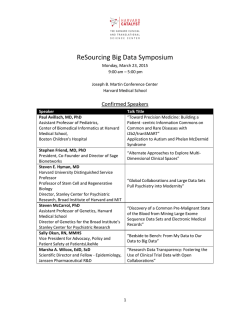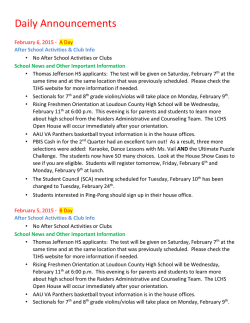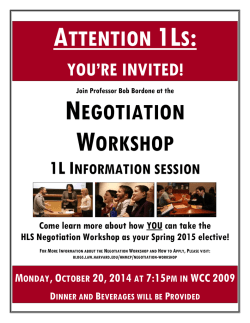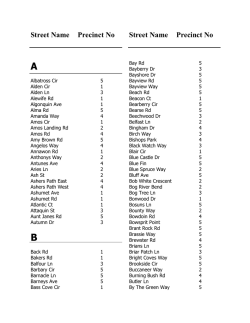
In the
In the United States Court of Appeals For the Seventh Circuit ____________________ No. 13-3302 YAROSLAV S. SKLYARSKY, Plaintiff-Appellant, v. MEANS-KNAUS PARTNERS, L.P., Defendant-Appellee. ____________________ Appeal from the United States District Court for the Northern District of Illinois, Eastern Division. No. 13 C 6707 — Joan B. Gottschall, Judge. ______________________ No. 14-2768 YAROSLAV S. SKLYARSKY, Plaintiff-Appellant, v. HARVARD MAINTENANCE, INC., Defendant-Appellee. ____________________ Appeal from the United States District Court for the Northern District of Illinois, Eastern Division. No. 13 C 859 — Charles P. Kocoras, Judge. 2 Nos. 13-3302 & 14-2768 ____________________ NO. 13-3302 SUBMITTED AUGUST 18, 2014 NO. 14-2768 SUBMITTED OCTOBER 30, 2014 * DECIDED JANUARY 29, 2015 ____________________ Before BAUER, ROVNER, and HAMILTON, Circuit Judges. ROVNER, Circuit Judge. For thirteen years Yaroslav Sklyarsky worked as a custodian at a Chicago office building. His employer changed several times during that period, and in April 2010 he began working for Harvard Maintenance when that company was awarded the building’s contract for janitorial services. Almost immediately Harvard supervisors began disciplining Sklyarsky. He complained to the Equal Employment Opportunity Commission (EEOC) and the Illinois Department of Human Rights (IDHR) that Harvard was treating him unfairly because of his Ukrainian national origin. Sklyarsky was fired in January 2013, and after exhausting his administrative remedies, he filed a pro se lawsuit against Harvard alleging discrimination and retaliation. See 42 U.S.C. §§ 1981, 2000e-2, e-3, e-5(f). 1 During discovery * We consolidated these related appeals for resolution. After examining the briefs and records, we have concluded that oral argument is unnecessary. See FED. R. APP. P. 34(a)(2). 1 Sklyarsky already was an experienced pro se litigator; previously he had filed discrimination suits against two of Harvard’s predecessors. See Sklyarsky v. ABM Janitorial Servs.-N. Cent., Inc., 494 F. App’x 619 (7th Cir. 2012) (affirming grant of summary judgment for defendant), Nos. 13-3302 & 14-2768 3 Sklyarsky concluded that the building’s management company, Means-Knaus Partners, had been involved in Harvard’s discriminatory conduct, and he sought leave to join Means-Knaus as a defendant. Judge Kocoras, who presided over the suit against Harvard, denied that motion, telling Sklyarsky that Means-Knaus had “nothing to do with the employment contract” and that, if he wanted to sue MeansKnaus, he would have to file a separate action. Sklyarsky did that. Judge Gottschall, who was assigned to the new suit against Means-Knaus, screened Sklyarsky’s pro se complaint and dismissed the action sua sponte. See 28 U.S.C. § 1915(e)(2)(B);Rowe v. Shake, 196 F.3d 778, 783 (7th Cir. 1999). She reasoned that, because Sklyarsky was suing Harvard, the doctrine of claim preclusion foreclosed a separate suit against Means-Knaus. Judge Gottschall did not discuss the lack of finality of the Harvard litigation or Judge Kocoras’s admonishment that Sklyarsky could sue Means-Knaus only in a separate action. Judge Kocoras would not reconsider after learning about Judge Gottschall’s decision, so Sklyarsky appealed the dismissal of his suit against Means-Knaus. While that appeal was being briefed, Harvard and Sklyarsky filed cross-motions for summary judgment. Judge Kocoras decided those motions in favor of Harvard, and Sklyarsky again appealed. We have consolidated his appeals, and we conclude that any procedural missteps were harmless. Sklyarsky v. The Millard Group, Inc., No. 06 C 1590 (N.D. Ill. 2007) (dismissed after settlement). 4 Nos. 13-3302 & 14-2768 The following background is drawn from the evidence at summary judgment in Sklyarsky’s suit against Harvard. We recount the evidence in the light most favorable to Sklyarsky. See Kvapil v. Chippewa County, Wis., 752 F.3d 708, 712 (7th Cir. 2014); Chaib v. Indiana, 744 F.3d 974, 981 (7th Cir. 2014). Sklyarsky first received a written warning for insubordination in August 2010. His supervisor at the time, Violeta Stosic, had gotten pushback from Sklyarsky after assigning him extra work on a day the staff was shorthanded. Stosic again cited Sklyarsky for insubordination in October 2011 when he searched for a seniority list in Harvard’s office despite being told to stay out. After each written warning, Sklyarsky filed an administrative complaint with the EEOC and the IDHR, the first time claiming discrimination on the basis of national origin and the second time, retaliation. In February 2012, John Karpierz replaced Stosic as Sklyarsky’s supervisor. Twice that year Karpierz disciplined Sklyarsky for poor performance. The first time was in March when Karpierz issued a written warning for not adequately cleaning desks in the offices. Then in June, Karpierz gave Sklyarsky a one-day suspension, again for inadequate cleaning but also for being “loud and disrespectful.” After this suspension Sklyarsky signed a “Last-Chance Agreement” conceding that he had displayed “poor performance and conduct” and acknowledging that he would be fired immediately if he did so again within a year. Even so, Sklyarsky submitted another administrative complaint to the EEOC and IDHR. Then around November 2012, in front of Nos. 13-3302 & 14-2768 5 Sklyarsky’s co-workers, Karpierz mocked his mixed use of Ukrainian and Polish. The last straw for Harvard was in January 2013 when Sklyarsky and co-worker Anders Kusper were disciplined by Karpierz for discussing personal matters on the job. Kusper received a warning, but Sklyarksy was suspended and then told by Harvard’s general manager that he was fired because of poor performance and the several disciplinary infractions. Once more Sklyarsky submitted an administrative complaint to the EEOC and IDHR; again he asserted discrimination and retaliation. After receiving notice of his right to sue, Sklyarsky sued first Harvard and then MeansKnaus under Title VII of the Civil Rights Act of 1964 and 42 U.S.C. § 1981. As noted, Sklyarsky appeals the adverse decision in each of his lawsuits. We begin with the case against MeansKnaus. Sklyarsky should have been permitted to join MeansKnaus as a defendant with Harvard because Sklyarsky accused the management company of participating with Harvard in the alleged discriminatory conduct. The district court relied on the absence of an employment contract in refusing to allow Sklyarsky to join Means-Knaus, but there were open fact questions on this point. In any case the absence of an employment contract would not have been a sound reason for cabining Sklyarsky’s lawsuit against Means-Knaus. A Title VII plaintiff might have joint employers. See Tamayo v. Blagojevich, 526 F.3d 1074, 1088 (7th Cir. 2008); Heinemeier v. Chemetco, Inc., 246 F.3d 1078, 1082–83 (7th Cir. 2001); Arculeo v. On-Site Sales & Mktg., LLC, 425 F.3d 193, 198 (2d Cir. 2005). And even if Means-Knaus was not Sklyarsky’s employer and did not have a contractual relationship with him, the com- 6 Nos. 13-3302 & 14-2768 pany might still have faced liability under Title VII if it was affiliated with Harvard. See Alam v. Miller Brewing Co., 709 F.3d 662, 667–68 (7th Cir. 2013); Tamayo, 526 F.3d at 1088; Worth v. Tyer, 276 F.3d 249, 259–60 (7th Cir. 2001). And, similarly, a third party can be liable under § 1981 for interfering with the plaintiff’s relationship with his employer. See Muhammad v. Oliver, 547 F.3d 874, 878 (7th Cir. 2008); Thanongsinh v. Bd. of Educ., 462 F.3d 762, 782–83 (7th Cir. 2006). As for the suit against Means-Knaus, dismissal on the ground of claim preclusion was in error. The suit against Harvard was still pending and thus the interim ruling denying leave to add Means-Knaus as a defendant was not a final decision having preclusive effect. See Amcast Indus. Corp. v. Detrex Corp., 45 F.3d 155, 158 (7th Cir. 1995); AVX Corp. v. Cabot Corp., 424 F.3d 28, 31–32 (1st Cir. 2005). Moreover, final or not, that ruling could not have precluded Sklyarsky from acting on the district court’s encouragement to pursue Means-Knaus in a later action. See Central States, Se. & Sw. Areas Pension Fund v. Hunt Truck Lines, Inc., 296 F.3d 624, 629 (7th Cir. 2002) (explaining that res judicata will not apply “if the court in an earlier action expressly reserves the litigant’s right to bring those claims in a later action”). Thus the error directing Sklyarsky to bring a second suit was compounded by dismissing that new suit as barred by the doctrine of claim preclusion. With hindsight, though, we now know that these errors did not prejudice Sklyarsky. His decision to sue MeansKnaus was made based on materials obtained during discovery that led him to conclude that the management company was involved in the alleged discrimination. But in this Nos. 13-3302 & 14-2768 7 court Sklyarsky concedes that Means-Knaus had no role in Harvard’s decision to fire him. Indeed, at his deposition Sklyarsky acknowledged that Harvard initiated the adverse employment actions and that Karpierz, his supervisor at Harvard, was the “main decision-maker.” The evidence submitted by both sides at summary judgment supports Sklyarsky’s revised understanding of events: All of the forms recording his discipline are Harvard documents completed by Sklyarsky’s supervisors, who were other Harvard employees. The letter notifying Sklyarsky and his union about his dismissal was signed by Harvard’s general manager and is explicit that Harvard had decided to dismiss him. No evidence points to Means-Knaus, and Sklyarsky does not contend that anything would be accomplished by remanding his suit against the management company for further proceedings. For that reason we affirm the dismissal of the lawsuit against Means-Knaus. With that we turn to the grant of summary judgment for Harvard. In ruling against Sklyarsky, the district court addressed together his claims under Title VII and § 1981, since the same analysis applies to both theories of liability. See Hutt v. AbbVie Prods. LLC, 757 F.3d 687, 691 (7th Cir. 2014); Andrews v. CBOCS West, Inc., 743 F.3d 230, 234 (7th Cir. 2014). The judge first reasoned that Sklyarsky could not establish discrimination under the direct method of proof, see Ripberger v. Corizon, Inc., 773 F.3d 871, 877 (7th Cir. 2014), because his only relevant evidence—Karpierz’s ridicule of his mixed use of Polish and Ukranian—was not enough for a jury to reasonably find discriminatory animus. Nor could Sklyarsky prevail, the judge continued, under the indirect method of McDonnell Douglas Corp. v. Green, 411 U.S 792 (1973). To establish a prima facie case of discrimination un- 8 Nos. 13-3302 & 14-2768 der that method, Sklyarsky was required to show membership in a protected class and that he was meeting Harvard’s legitimate expectations, suffered an adverse employment action, and was treated less favorably than a similarly situated employee outside of the protected class. See Ripberger, 773 F.3d at 879; Orton-Bell v. Indiana, 759 F.3d 768, 777 (7th Cir. 2014). Judge Kocoras explained that, so far as the undisputed evidence showed, Sklyarsky had not been meeting Harvard’s legitimate employment expectations and was not treated less favorably than non-Ukranian coworkers with similar disciplinary problems. And, finally, Judge Kocoras concluded that Sklyarsky could not prove retaliation because he lacked evidence that his administrative complaints prompted the progressive discipline, including the loss of his job. See Univ. of Tex. Sw. Med. Ctr. v. Nassar, 133 S. Ct. 2517, 2528 (2013). Sklyarsky contends that disputed issues of material fact preclude assuming that he was not meeting Harvard’s legitimate employment expectations. Sklyarsky explains that he was one of the best custodians in the building, had worked there for more than a dozen years, and was never the subject of complaints from building occupants. As for the warning Violeta Stosic issued in October 2011, Sklyarsky asserts that reviewing a seniority roster was not against the rules and that, concerning this incident, Harvard admitted to the EEOC and IDHR that he was meeting its expectations. Sklyarsky’s own opinion about his work performance is irrelevant. See Sublett v. John Wiley & Sons, Inc., 463 F.3d 731, 740 (7th Cir. 2006); Peele v. Country Mut. Ins. Co., 288 F.3d 319, 329 (7th Cir. 2002). And focusing narrowly on the October 2011 incident accomplishes nothing, since Stosic’s warn- Nos. 13-3302 & 14-2768 9 ing did not lead to a loss in pay or change in job status and thus was not an adverse employment action. See Cole v. Illinois, 562 F.3d 812, 816–17 (7th Cir. 2009); O’Neal v. City of Chicago, 392 F.3d 909, 911–12 (7th Cir. 2004); Oest v. Ill. Dep’t of Corrs., 240 F.3d 605, 612–13 (7th Cir. 2001). Moreover, Sklyarsky stretches the record in saying that Harvard admitted he was meeting its expectations concerning this incident. What the defendant actually said in responding to his administrative complaint was that Sklyarsky’s “work performance as a janitor meets its expectations,” though he “repeatedly” had violated the company’s disciplinary rules “by committing repeated acts of insubordination.” In his appellate brief Sklyarsky selectively quotes this language to obscure Harvard’s point: Sklyarsky had repeatedly broken company rules, even though satisfactorily performing his custodial work. And though Sklyarsky is correct that company rules did not explicitly proscribe reviewing a seniority list, he did not dispute that he was disciplined after calling a supervisor a “nobody” and insisting that he could do what he pleased when the supervisor told him not to go into Harvard’s office. Further, by the time of his discharge in 2013, Sklyarsky had incurred five reprimands (including two suspensions) in less than three years. He insists that it would have been impossible for Karpierz to overhear him talking with his co-worker when he was disciplined the final time, but Sklyarsky did not dispute that the incident had occurred or that Harvard prohibits “interfering with any employee’s performance of duties by talking or other distractions during normal work hours.” Sklyarsky’s inability to show that he was meeting Harvard’s legitimate employment expectations is fatal to his reliance on the indirect method. See Brown v. Advocate S. Sub- 10 Nos. 13-3302 & 14-2768 urban Hosp., 700 F.3d 1101, 1104–05 (7th Cir. 2012) (plaintiff must meet each element of a prima facie case to survive summary judgment under indirect method); Coco v. Elmwood Care, Inc., 128 F.3d 1177, 1179–80 (7th Cir. 1997) (same). Thus, we need not address his challenge to the district court’s conclusion that he did not identify a similarly situated employee who was treated more favorably. Finally, Sklyarsky asserts that his claims of retaliation should have survived summary judgment because, he maintains, he produced sufficient evidence of a causal connection between his complaints to the EEOC and IDHR and Harvard’s discipline. On his retaliation claims Sklyarsky proceeded under the direct method, which required him to produce evidence that he engaged in statutorily protected activity, that he suffered a materially adverse action, and that Harvard’s desire to retaliate was the but-for cause of the adverse action. See Nassar, 133 S. Ct. at 2528; Milligan v. Bd. of Trs. of S. Ill. Univ., 686 F.3d 378, 388 (7th Cir. 2012). The district court concluded that Sklyarsky could not demonstrate a causal connection. Suspicious timing alone rarely establishes causation, but if there is corroborating evidence that supports an inference of causation, suspicious timing may permit a plaintiff to survive summary judgment. See Coleman v. Donahoe, 667 F.3d 835, 860–61 (7th Cir. 2012); Culver v. Gorman & Co., 416 F.3d 540, 546 (7th Cir. 2005). The only evidence of causation that Sklyarsky presented was suspicious timing between the reprimands, suspension, and his dismissal and the administrative complaints he filed. He did not identify any other evidence suggesting that his repeated administrative complaints motivated the discipline he received. The reprimands by themselves did not constitute materially adverse employment actions. See Chaib, 744 F.3d Nos. 13-3302 & 14-2768 11 at 986–87; Brown, 700 F.3d at 1109; Harper v. C.R. England, Inc., 687 F.3d 297, 306 n.31 (7th Cir. 2012). And the six months that lapsed between his complaint in December 2011 and suspension in June 2012 and his complaint later that month and his termination in January 2013 is by itself insufficient to support an inference of causation. See Kidwell v. Eisenhauer, 679 F.3d 957, 966–67 (7th Cir. 2012) (concluding that five-week lapse alone does not support inference of causation); Casna v. City of Loves Park, 574 F.3d 420, 427 (7th Cir. 2009) (explaining that adverse action one day after protected activity was suspicious timing). Accordingly, we AFFIRM the dismissal of Sklyarsky’s suit against Means-Knaus Partners and the grant of summary judgment for Harvard Maintenance.
© Copyright 2026





